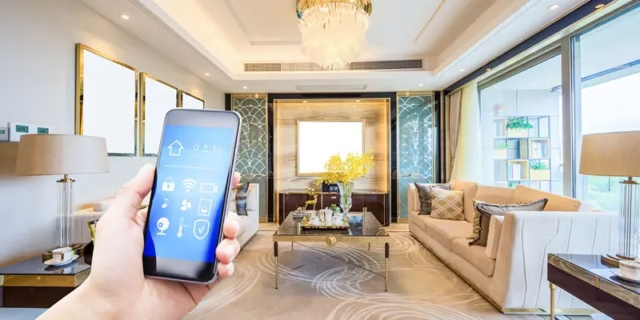Smart homes are becoming more popular every year. They promise convenience, efficiency, and improved security. But installing smart devices isn’t always smooth. Many people encounter problems that could have been prevented with a little planning. Common issues include connectivity problems, incompatible devices, and security risks. Sometimes, smart systems fail because homeowners overlook basics like network strength or power backups. Other times, the setup is rushed, leading to devices that don’t work as expected. These failures can frustrate users and reduce trust in smart technology. Knowing what can go wrong helps you avoid mistakes and get the most out of your smart home setup. This guide highlights ten common smart home fails and explains how to prevent them. Following these tips can make your smart home more reliable, safe, and easy to use.
1. Weak Wi-Fi Coverage
One of the most common issues in smart homes is poor Wi-Fi coverage. Smart devices rely on a stable internet connection to communicate. If your router doesn’t reach every room, devices may disconnect or lag. Devices like cameras, smart speakers, and thermostats can stop working if the Wi-Fi signal is weak.
To avoid this, test your Wi-Fi in all areas before installing devices. Consider using Wi-Fi extenders or mesh systems for larger homes. Place your router centrally and avoid physical obstructions. Checking coverage helps ensure every device performs reliably.
2. Choosing Incompatible Devices
Not all smart home devices work together. Some devices require specific hubs or apps. Others may only work with certain voice assistants. Buying incompatible devices is a common mistake that frustrates users.
Before purchasing, check the compatibility of new devices with your existing system. Look for products that support the same ecosystem. For example, if you have a Google Home setup, ensure new devices work with Google Assistant. Planning compatibility saves time and prevents unnecessary returns.
3. Poor Device Placement
Placement matters. Installing devices in the wrong spot can limit performance. Motion sensors placed too high or cameras blocked by walls won’t work properly. Smart lights far from the hub may lag or fail.
Plan placement carefully. Follow manufacturer recommendations for distance and height. Ensure devices have a clear line of sight to the hub when required. Proper placement improves performance and reduces frustration.
4. Ignoring Network Security
Smart homes can be vulnerable to hacking if security is ignored. Weak passwords, outdated firmware, and unsecured devices increase risk. Hackers can access cameras, locks, or personal data.
Use strong, unique passwords for every device. Enable two-factor authentication when available. Regularly update firmware and software. Segment smart devices on a separate network if possible. Staying proactive about security keeps your home safer.
5. Overloading the Network
Too many devices on a single Wi-Fi network can cause slowdowns or disconnections. Smart homes with many sensors, cameras, and speakers may overload a router, especially older models.
Check your router’s capacity before adding devices. Use wired connections for devices that support Ethernet. Upgrade to a router or mesh system capable of handling multiple devices. Monitoring network load ensures stable performance.
6. Ignoring Power Backup
Many smart devices stop working during power outages. Without backup, security cameras, smart locks, and alarms may fail when you need them most.
Consider using uninterruptible power supplies (UPS) for essential devices. Some devices have built-in battery backup—check specifications before buying. Planning for outages ensures your home stays functional during emergencies.
7. Relying Too Heavily on Voice Commands
Voice commands are convenient but not always reliable. Noise, accents, or background sounds can cause misunderstandings. Relying solely on voice to control devices may lead to frustration.
Always have alternative controls like apps, physical buttons, or automation schedules. Multiple control options improve reliability and user experience.
8. Skipping Automation Testing
Automation can simplify life, but setting it up incorrectly can backfire. Lights turning off too early, thermostats adjusting at the wrong time, or doors locking unexpectedly are common automation fails.
Test every automation before relying on it. Adjust timing, triggers, and conditions to match your lifestyle. Regularly review and update automation as needs change. Testing prevents unintended surprises.
9. Forgetting Firmware Updates
Manufacturers release firmware updates to fix bugs and improve performance. Ignoring updates can cause devices to stop working or become vulnerable to attacks.
Enable automatic updates when possible. Check for updates manually if not. Keeping devices current ensures they function correctly and securely.
10. Not Planning for Expansion
Many homeowners start small but eventually add more devices. Failing to plan for future expansion can cause compatibility or network issues.
Think ahead about the number of devices you may add. Choose a hub and network that can scale. Planning for growth avoids frustration and extra costs later.
If you are considering professional help for setup, smart home installation in Sarasota, FL can make sure devices are placed correctly, connected properly, and configured for maximum efficiency. Professionals can help with network coverage, security, and device compatibility to prevent common mistakes.
Even with professional help, ongoing maintenance is key. Check firmware, monitor network health, and review automation regularly. When adding new devices, verify compatibility and placement.
For those living nearby, smart home installation in Port Charlotte, FL provides reliable options for both new setups and upgrades. Skilled technicians can help your smart home run smoothly, avoiding most common fails, and ensuring it is safe, secure, and convenient to use.
click here to visit website for more interesting collection of articles







